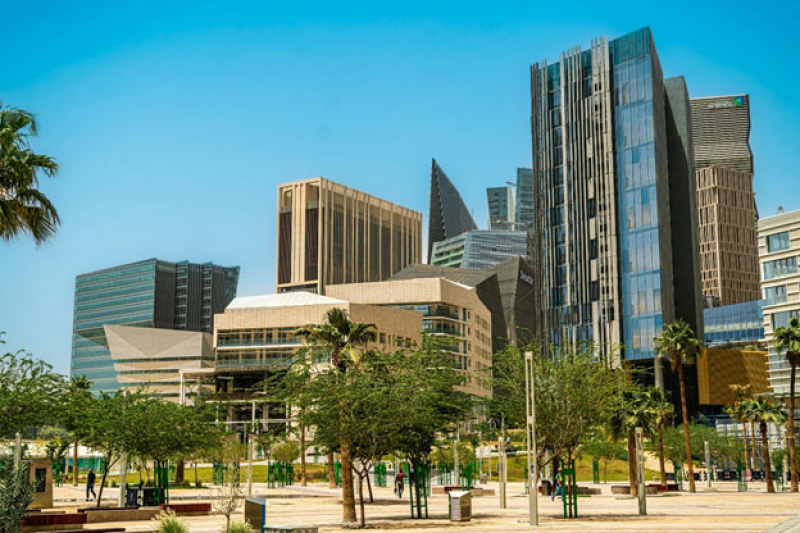- Khulna’s ‘white gold’ shrimp eyes Tk 22,600cr export goal |
- Show-cause notices on Sylhet DC, 4 others over mobile court |
- Bangladesh Faces $1.25 Billion Export Loss from US Tariffs |
- Israel Expands Gaza Assault as UN Warns of ‘Genocide’ |
- World Ozone Day Highlights Progress and Future Action |
Arab Region Sees Surge in Green Jobs Amid Energy Shift

The King Abdullah Financial District in Riyadh.
In the Arab region, once seen as an oil oasis, green jobs now make up 29 per cent of energy sector roles and 23 per cent of oil and gas jobs. These figures signal a shift towards sustainable business practices as the region works to reduce its dependence on oil and advance the Sustainable Development Goals (SDGs) by 2030.
New data from the UNESCWA Skills Monitor shows a steady rise in the share of green jobs in the online job market. Although green job postings account for only 5.06 per cent in 2024, this marks significant growth from 3.5 per cent in 2021.
Saudi Arabia is leading the transition, with green jobs making up 6.22 per cent of its job market—reflecting major investment in economic diversification and green initiatives under Saudi Vision 2030, aligned with the UN 2030 Agenda.
Qatar and Oman follow with 4.59 per cent and 3.53 per cent respectively, while the UAE and Egypt trail behind despite their larger GDPs. Globally, the United States leads with 11.40 per cent of green jobs, well above the Arab region’s 3.85 per cent average.
In oil and gas, Saudi Arabia again leads with 28 per cent of jobs classified as green, followed by Oman (22.5 per cent), Qatar (16 per cent), and the UAE (15 per cent). Managerial and engineering roles dominate the region’s green job market, with the highest demand for project managers, health and safety engineers, environmental managers, electrical engineers, construction engineers, and civil engineers.
By contrast, in the United States, technician roles in energy production and environmental management make up a larger share of green employment. UNESCWA noted: “These differences reflect diverse national approaches to sustainability, shaped by energy policies and strategic investments in green technologies.”
Within a single year, green jobs in the Arab region’s energy sector jumped from 23.26 per cent to 29.10 per cent, a rise of 5.93 percentage points in a short time.
The report highlights the Arab region’s leadership in transforming its oil and gas sectors, particularly among Gulf Cooperation Council members, who are accelerating economic diversification. This transition is expected to generate large numbers of green energy roles, bringing the region closer to a near carbon-zero future.
UNESCWA recommends four key policies to accelerate green job growth:
Boost green investments and corporate sustainability by expanding green bonds, SME funding, and sustainability-linked loans for clean technology and renewable energy.
Enhance education and workforce development by integrating sustainability into curriculums, expanding vocational and technical training, and offering re-skilling for workers in high-carbon industries.
Integrate green jobs into national strategies by aligning workforce planning with sustainability goals, embedding green targets in industrial policies, and strengthening regional cooperation.
Strengthen data and monitoring by making information publicly available to help governments, businesses, and educators shape the green workforce.

